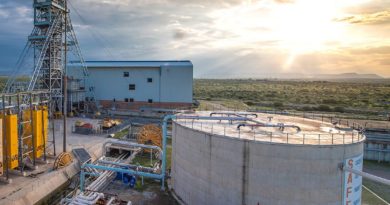Green hydrogen to trigger significant platinum demand growth
Green hydrogen is a zero-emissions, sustainable fuel made by using renewable energy – primarily wind and solar – to power electrolysis that splits water into its constituent parts. Platinum, in conjunction with iridium, is used as a catalyst in proton exchange membrane (PEM) electrolysers that use polymer electrolyte, one of the two leading electrolysis technologies available in the market. The other technology is alkaline electrolysis.
Clearly, electrolyser capacity will need to grow if the intentions of REPowerEU for green hydrogen production are to be met, and the EU is looking to install some 80 gigawatts of electrolyser capacity by 2030, up from a pre-crisis plan of 40 gigawatts.
However, this implies an optimistically-high capacity factor of 68 per cent for the renewable electricity used to power the electrolysers. Capacity is the amount of electricity a generator can produce when it is running at its maximum power output, while the capacity factor adjusts this to account for periods when a generator runs below maximum output, for example when there is no sun or little wind.
Using a more realistic renewable energy capacity factor of 49 per cent, it is estimated that even the installation of 80 gigawatts of electrolyser capacity would, in practice, produce only around 6.3 million tonnes of green hydrogen each year, some way short of the amount targeted by the EC to replace Russian imports by 2030.
In fact, electrolyser capacity would need to reach nearer 115 gigawatts, which has the potential to produce enough hydrogen to displace approximately 30 billion cubic metres of Russian gas imports when powered using renewable energy.
The electrolyser capacity required to achieve the intentions of REPowerEU could lead to a significant, incremental increase in platinum demand. Taking a scenario where 115 GW of 100 per cent renewable-powered electrolyser capacity is installed, and assuming that the two major electrolyser technologies – PEM and alkaline – have an equal market share in 2030, incremental annual platinum demand of around 240 koz could by then be required by the EU alone.
What is more, the scale of green hydrogen production envisaged would undoubtedly have a positive impact on hydrogen infrastructure in general, accelerating the commercial adoption of fuel cell electric vehicles (FCEVs) and bringing forward the significant platinum demand associated with them. Depending upon the pace of FCEV adoption, it is estimated that, between 2033 and 2039, this could reach over 3 million ounces per annum, similar in size to the global demand for platinum in autocatalysts today*.
*World Platinum Investment Council (WPIC) Platinum Essentials, March 2022




